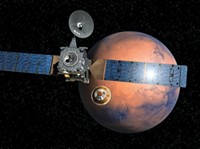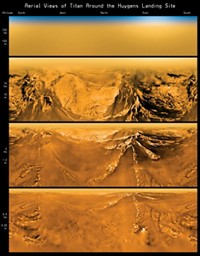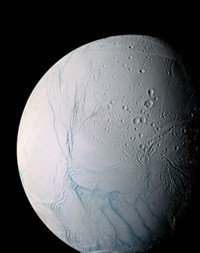Advertisement
Grab your lab coat. Let's get started
Welcome!
Welcome!
Create an account below to get 6 C&EN articles per month, receive newsletters and more - all free.
It seems this is your first time logging in online. Please enter the following information to continue.
As an ACS member you automatically get access to this site. All we need is few more details to create your reading experience.
Not you? Sign in with a different account.
Not you? Sign in with a different account.
ERROR 1
ERROR 1
ERROR 2
ERROR 2
ERROR 2
ERROR 2
ERROR 2
Password and Confirm password must match.
If you have an ACS member number, please enter it here so we can link this account to your membership. (optional)
ERROR 2
ACS values your privacy. By submitting your information, you are gaining access to C&EN and subscribing to our weekly newsletter. We use the information you provide to make your reading experience better, and we will never sell your data to third party members.
Physical Chemistry
A Shrouded World Revealed at Last
Huygens probe lands safely on Titan, sends back stunning first images
by Elizabeth K. Wilson
January 24, 2005
| A version of this story appeared in
Volume 83, Issue 4

Within hours of the Huygens probe's dramatic landing on a muddy patch of Saturn's giant moon Titan on Jan. 14, people on Earth beheld the first-ever close-up images of this alien world: eroded terrain scarred by drainage channels running down to a shoreline and a snapshot of chunky icy pebbles. And that's only the beginning.

Over the next few weeks, scientists expect to unveil troves of images and data gathered from the European Space Agency's (ESA) probe, which plunged through Titan's thick nitrogen-and-methane atmosphere after its seven-year ride onboard the Cassini spacecraft. Huygens was designed to pay particular attention to the chemistry of Titan, sampling and analyzing organics in the frigid atmosphere.
In the days after the descent, scientists gleaned that the probe had dropped onto a solid surface with a sandy or claylike texture, probably composed of water and hydrocarbon ice. A methane or ethane fog hangs near the surface, capped by methane clouds. And the striking pebbles are probably composed of water ice.
At ESA's operations center in Darmstadt, Germany, awed scientists and engineers--some of whom have worked on the Cassini/Huygens mission for 25 years--monitored the long-awaited descent, some near tears.
"Seeing a planet emerge that has dynamics and complexity is just amazing," said Alphonso V. Diaz, NASA's associate administrator of science.
"This is a historic event," said David J. Southwood, ESA's director of science programs. "I don't think it's likely that in the lifetime of anyone in the room we will repeat a landing on Titan."
Titan is the only moon in the solar system with a significant atmosphere. Like Earth, this atmosphere is composed largely of nitrogen, but unlike Earth, it also contains methane clouds. For decades, astronomers have been frustrated in their attempts to view Titan's surface, which scientists have long suspected harbors hydrocarbon lakes. The mix of molecules there is believed to be similar to that faced by early life on Earth. Whether Titan's environment could produce molecules that are precursors to life has been a long-standing question.
The Huygens probe began its descent to Titan on Dec. 24, 2004, when it was jettisoned by Cassini. The probe entered the moon's atmosphere on schedule, deploying several parachutes to break its fall. During the two-and-a-half-hour plunge, Huygens sent data from its numerous instruments back to Cassini.
Though Huygens' life span was expected to be limited after touchdown, the probe continued to transmit data for another 72 minutes. Cassini eventually passed beyond Titan's horizon and stopped tracking Huygens, but ground-based radio telescopes monitored the signal for an hour or two longer.
In addition to cameras, Huygens carried a gas chromatograph and mass spectrometer designed to identify low- to mid-mass organic molecules, as well as a pyrolyzer for breaking apart and analyzing aerosols in the atmosphere. Scientists were expecting to announce a host of new findings on Jan. 21.
The Huygens mission is a welcome success for a sometimes troubled Earth, remarked Torrence Johnson, a Cassini mission imaging team member at the Jet Propulsion Laboratory, which manages the NASA project. "This is one of those things where humanity shines," he said.





Join the conversation
Contact the reporter
Submit a Letter to the Editor for publication
Engage with us on Twitter